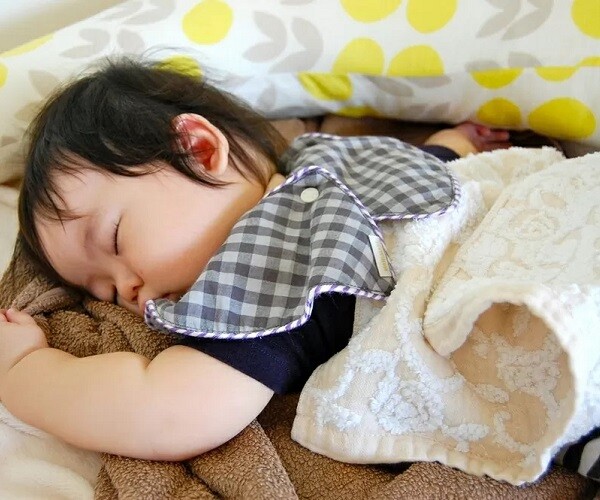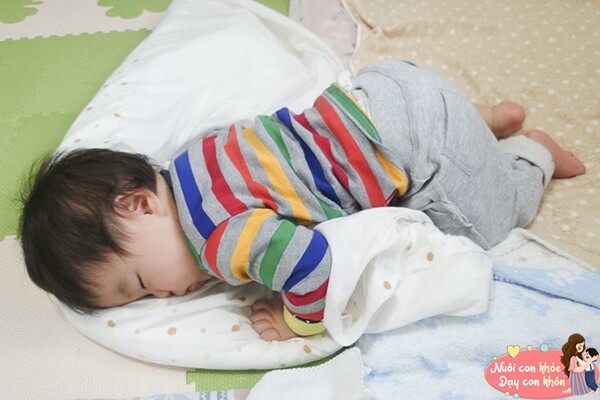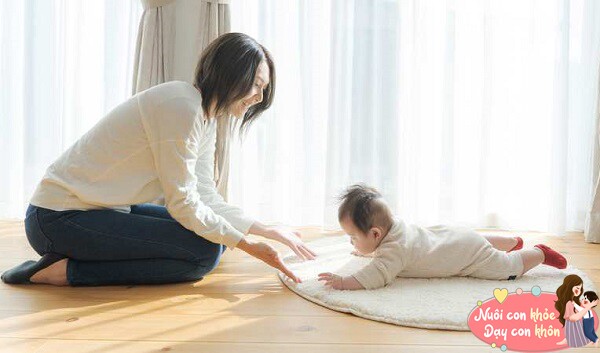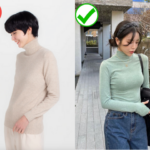Have you ever considered that your child’s sleeping posture could reveal a lot about their personality? Could their inner world be silently expressed even while they sleep?
A child’s sleeping posture reflects their body’s habits and their brain’s preferences. We don’t just lie down and fall asleep; our sleeping posture is a safety pattern chosen by our brain. This means that your child feels safe, comfortable, and most like themselves in that position.


Face-down, nose in the pillow
Some children like to sleep face-down, nose in the pillow, much like a hedgehog curling up. Parents may worry that this posture will put pressure on the chest and cause breathing difficulties.
Medical experts warn that infants and young children who regularly sleep face-down are at risk of suffocation, especially those under three months old. However, children who continue sleeping this way after the age of three or four are expressing a strong desire for control. They tend to be emotionally closed off but are very passionate on the inside.
As a result, they may appear well-behaved, but when their boundaries are challenged, their stubborn streak can anger the entire family.


Curled-up sleepers
For children who like to sleep curled up, their small bodies curl up like a cat taking a nap. According to experts, these children have a strong capacity for empathy but are particularly sensitive to the emotions of those around them.
They can read others’ expressions early on and, even at three or four years old, understand that “Mom is not happy today, so I won’t bother her.” However, the issue is that they worry easily, and even when Mom doesn’t say anything, they can sense her anxiety.
As they grow up, they tend to develop a people-pleasing personality and consider others’ thoughts first, which can tire them out, sometimes at the expense of their own emotions.


Sleeping in the shape of the letter “人”
However, some children sleep with their arms and legs stretched out, naturally spread wide, their heads tilted to one side, and their whole body exposed like the letter “人.” This sleeping posture reflects a sense of security and indicates that the child trusts their surroundings, their parents, and themselves.
These children grow up to be confident, expressive, daring to experiment, and unafraid of failure. They can be playful and strong-willed but have their own opinions. These children often take the lead in groups and are bold in speech and action.
At the same time, they are adaptable, handle stress well, and have superior psychological endurance compared to their peers. If your child prefers this sleeping posture, you can rest assured to some extent.

Diving posture: crossed legs, buttocks raised
Some children sleep like they’re diving into the pillow, with their legs crossed and buttocks raised. This posture is called “fetal regression” in medicine and is considered a psychological defense mechanism. It often occurs when the environment changes significantly or during stressful times, such as starting kindergarten, welcoming a new family member, or experiencing something unsettling.
If your child frequently sleeps in this posture, pay attention, as it indicates unresolved stress and is like a cry for help from within.

Don’t underestimate these small movements. Sleeping postures are considered the subconscious language of children. The brain doesn’t entirely shut down during sleep but operates in its most honest state. Everything said, heard, and felt during the day is processed and categorized at night and then expressed through posture.
Some children also need to hold something while they sleep, whether it’s a stuffed toy, a corner of a blanket, or even their parent’s hand. This indicates that they are setting up a safety boundary. They are sensitive, value companionship, and cherish relationships.
As they grow up, they tend to be enthusiastic in front of friends but are especially vulnerable when ignored and sensitive to disappointment. This sleeping posture serves as an emotional backup, so parents should pay attention.

“Night Walker” sleeping style
The easiest-to-miss sleeping posture is that of the “Night Walker,” where the child sleeps soundly but wakes up at the head and foot of the bed, as if they’ve just been through a battle. This is mostly due to high energy levels, and their brain remains active at night.
Children who sleep like this tend to be very active during the day but are easily distracted and have poor concentration. According to experts, this could be due to the low quality of their sleep.
In this case, parents should aim to reduce visual and auditory stimulation one hour before bedtime, such as stopping cartoon shows, dimming the lights, and slowly “slowing down” the brain.

Can sleeping postures be changed?
The answer is yes, but there’s no need to force it unless it’s affecting their health. For example, sleeping face-down can impact breathing or cause long-term spinal compression. For other postures, as long as the child wakes up feeling refreshed, there’s no need for concern.
Parents’ reactions are more important than the sleeping posture itself. How you perceive these differences will determine how your child responds to the world.
Behavior is a language, and gestures are signals. Children aren’t as skilled as adults at expressing their emotions clearly, but they will use their bodies to send signals: Are they comfortable? Are they happy or sad? Do they feel understood?
Your seemingly normal perception is the resonance your child needs most on their journey to adulthood.
So, don’t be quick to correct or worry about their sleeping postures. Each gesture and posture has a reason behind it, sometimes reflecting their developmental rhythm or emotional state. Therefore, experts advise that instead of trying to change them, you should strive to understand your child with all your heart. And sometimes, your child is using their sleeping posture to say: “I’m ready; no matter how life positions me, I dare to face the challenge.”
5 Autumn Fashion Fails: Items to Avoid This Season
Autumn fashion is all about embracing the season’s rich palette and cozy textures. However, it can be a challenge to navigate the many style pitfalls that can cost you both money and your sartorial edge. It’s time to bid farewell to these five fashion faux pas that will instantly dampen your style game and leave you feeling less than fabulous.
The Ultimate Style Guide: Mastering the Art of Effortless Chic with a Sundress
As summer arrives, women inevitably fall back in love with the effortless elegance of a loose dress. This timeless garment offers unparalleled comfort and versatility, making it a go-to choice for any occasion, be it a casual stroll in the park, a day at the office, or even a tropical vacation. With just a single piece, you can effortlessly achieve a look that is both graceful and captivating, ensuring you leave a lasting impression wherever your summer adventures take you.




































